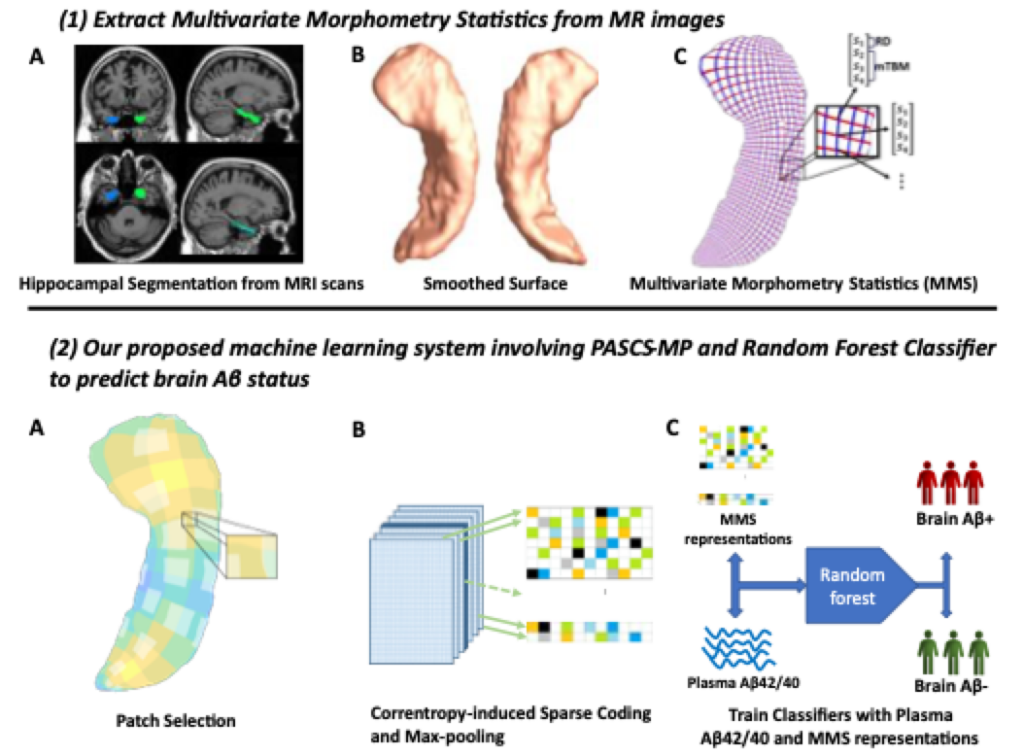Predicting Brain Amyloidosis with Plasma B-Amyloid42/40 and MRI-Based Morphometry Features
Jianfeng Wu, Yi Su, Paul M. Thompson, Eric M. Reiman, Richard J. Caselli, Kewei Chen, Yalin Wang, for the Alzheimer’s Disease Neuroimaging Initiative*
Abstract
Biomarker assisting early detection and intervention in Alzheimer’s disease (AD) may be the key to therapeutic breakthroughs. One of the presymptomatic hallmarks of AD is the accumulation of beta-amyloid (Aβ) plaques in the human brain. However, current methods to detect brain Aβpathology are either invasive (lumbar puncture) or quite costly and not widely available (amyloid PET). The blood- based biomarker, like plasma Aβ42/Aβ40, enables more rapid and inexpensive screening of potential participants for brain amyloidosis [1]. Additionally, our recent research has demonstrated that MRI-based hippocampal multivariate morphometry statistics (MMS) can be an effective neurodegenerative biomarker for predicting brain amyloid deposition [2]. In this study, we demonstrate that the combination of these two state-of-the-art biomarkers could achieve superior performance in predicting the brain Aβ burden assessed based on amyloid PET.
